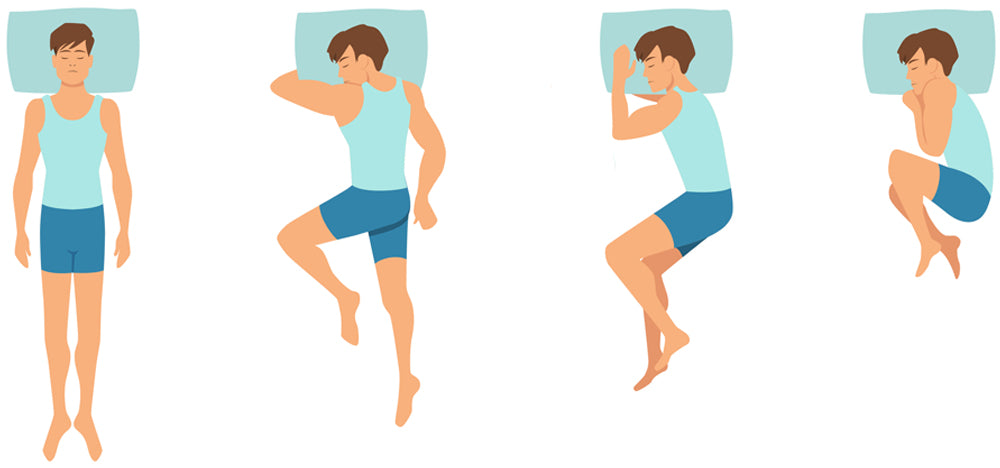Common Sleeping Positions For CPAP Therapy
January 22, 2020

What Happens To Our Breathing When We Sleep
Many physiological changes happen in our bodies when we sleep. Body temperature and blood pressure levels tend to decrease, brain wave activity varies and even heart rates can change. Breathing is another essential body function that changes once you shut your eyes for the night.
When awake, breathing patterns tend to be quite irregular due to speaking, exercise, emotions and many other activities. Once you fall asleep, your breathing rate slows down slightly and you settle into a regular breathing pattern. Yet once you enter REM sleep, the breathing rate goes up and becomes irregular again.
The position you sleep in can also impact how your breathing changes during sleep. For example, lying flat on your back can often restrict your upper airways. This is because gravity is now working against you making it more difficult to take in a breath.
To learn how sleeping positions affect your CPAP therapy, keep reading below and we’ll guide you through the most common positions patients prefer.
Body Position And CPAP Therapy
While we all have our favourite go-to position to sleep in, whether it is curled up in the fetal pose or spread-eagled across the bed, when it comes to CPAP therapy body position is important to keep in mind.
As we said above, some positions make it more difficult to breathe properly while asleep. It is often recommended that sleeping on your side is best, especially for those who have sleep disorders. A side-sleeping position means the neck area is less restricted by weight and the airways are more open.
However, changing our body positions during sleep isn’t something that’s easily done. The good news is that there is CPAP equipment available to help you not only sleep comfortably but also stay compliant with your CPAP therapy.
Sleeping Positions And CPAP Therapy: Recommended Positions
Side Sleeper
As a side sleeper, you may find sleeping with CPAP masks and equipment less bothersome. Although, certain masks such as a full face mask may not be preferable if you automatically turn to your side when you get under the sheet at night.
Instead, a CPAP mask that is more minimal in design such as a nasal pillow mask could be a better option. This is because side sleepers require a mask that will stay on and sealed while being pressed up against a pillow. Nasal pillow masks help to minimize how frequently the mask shifts out of position. So, that means you have less risk of air leakages happening.
We recommend the ResMed AirFit P10 Nasal Pillow Mask. It’s quick fit elastic technology provides stability and adjustability with minimal facial contact - so, no large red marks on your face in the morning.
Back Sleeper
Sleeping on your back, while not always recommended if you have sleep apnea, does open you up to more options when it comes to CPAP masks.
If you have been prescribed a high airway pressure level, you may find that being a back sleeper is easier and more comfortable for complying with CPAP therapy. Masks such as the full face mask are ideal for this purpose. Their bulkier design and facial coverage make sure that you don’t experience any irritation from your prescribed CPAP pressure level.
Try the ResMed AirFit F30 Full Face Mask. It is designed to sit lower and cover less of the face than other CPAP mask models. You can easily wear your glasses, have a clearer field of vision and is still comfortable if you manage to turn over on your side during the night.
CPAP Masks And Accessories For All Sleeping Positions
Changing your sleeping habits can be tricky but with the right CPAP equipment, you can still reap the benefits of CPAP therapy.
Sleep on your stomach? Are you a toss and turner? Ask our clinicians which masks are popular for your preferred sleeping position. If you would like to try a mask before you buy, make sure to visit a local CPAP vendor and try on the demos for fit and sizing.
Share:
Leave a comment
Comments will be approved before showing up.




